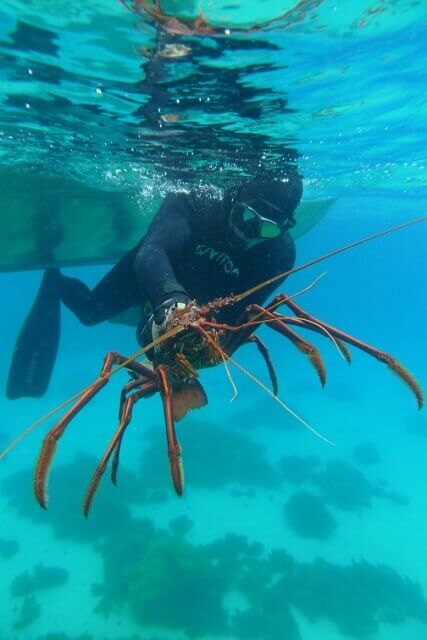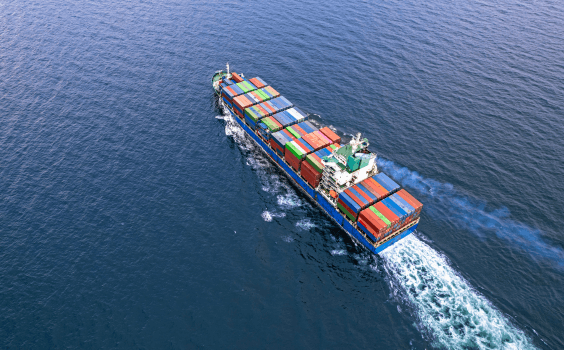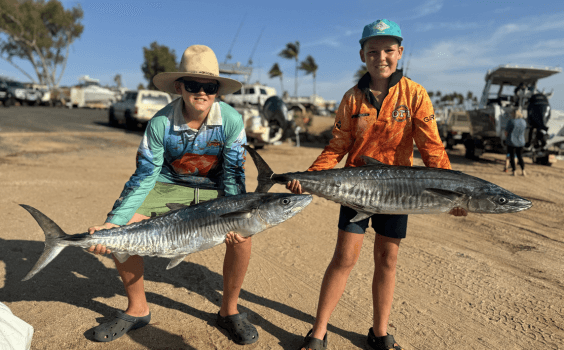Cray days are coming with the ‘whites run’ almost upon us.
One of the State’s leading western rock lobster experts, DPIRD Principal Research Scientist Dr Simon de Lestang, has forecast the 2021-22 run to get underway in about three weeks.
This will be music to the ears of the State’s more than 50,000 licensed cray fishers who are keen to head out to get a bag of crays this summer before heading to work.
Dr de Lestang said the abundance of crayfish is set to produce plenty of nearshore fishing activity, as crays begin their annual migration to deeper waters.
“Things will likely get underway in mid-November and we’re expecting another terrific season,” he said.
“We’re getting amazing measures of lobster in shallow waters – really good numbers of reds, some of which are currently just undersized and also many which are legal.
“Once they begin to walk, the nearshore fishing opportunities for people with pots or those diving will be fantastic.”

Predicting the future
DPIRD collect the puerulus — a juvenile stage of a cray — with specialised buoys mimicking natural algae habitat where juvenile crayfish like to settle to forecast crayfish abundance each season.
This method allows DPIRD researchers determine how many puerulus have concentrated on these buoys for each new moon period and then determine upcoming recruitment trends and patterns.
The settlement information has a strong correlation with crayfish catches in about four years once the crays have matured to a legal size.
This data allows DPIRD to make accurate seasonal forecasts.
Although the puerulus settlement for the 2017 season was just below 2016’s levels, Dr de Lestang said fishers are still highly likely enjoy big bags of crayfish catches this summer.
“It’s going to be a much more solid run than we’d ever have expected based off the puerulus because of the residual lobster that were left in the water from last year,” he said.
“These residual lobster are going to ensure this is a much stronger run.”
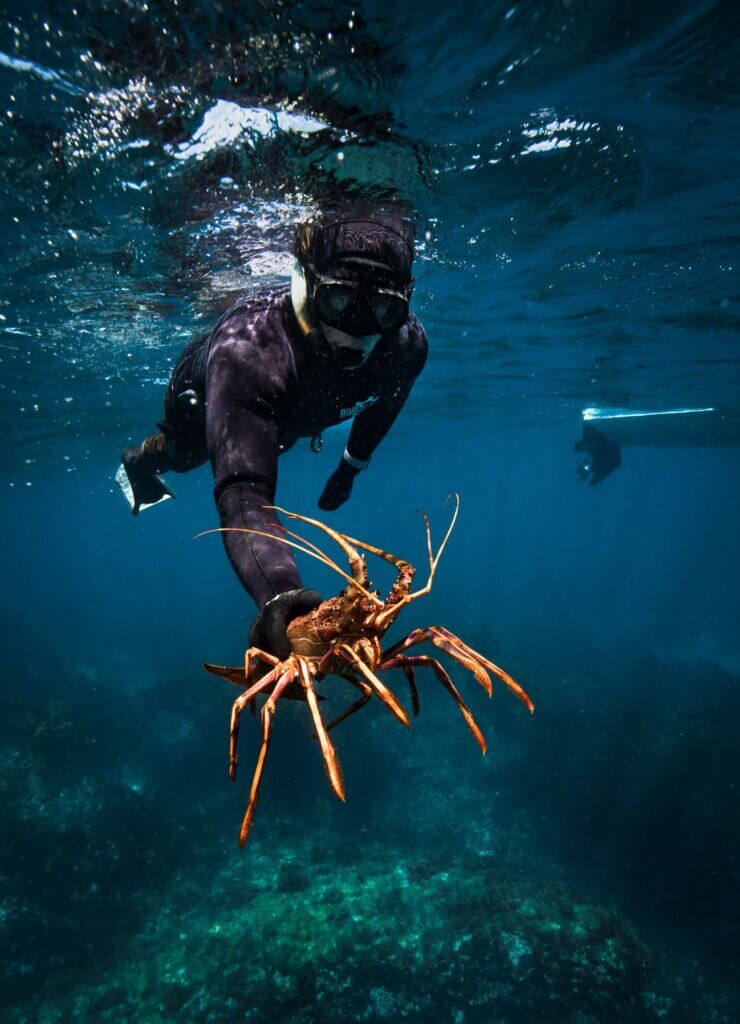
White walkers
The start of the annual whites run varies, but it is usually a safe bet that the whites will begin their north-westerly walk sometime around late November and early December.
As all seasoned cray fishers will tell you, the reason it is dubbed the ‘whites run’ is relatively simple: A ‘white’ cray is a colloquial way to describe crayfish which have freshly moulted with their new soft, pale shell.
It is easy to identify a pre-moulted cray because they have a hard, dark red shell.
Juvenile crays settle along seagrass beds and rocky habitat close to shore and when they reach sexual maturity – at about three to four years – they migrate from this inshore habitat.
During the migration, crays set off towards deeper offshore reef platforms in a north-westerly direction – this is where the ‘run’ in ‘whites run’ comes from.
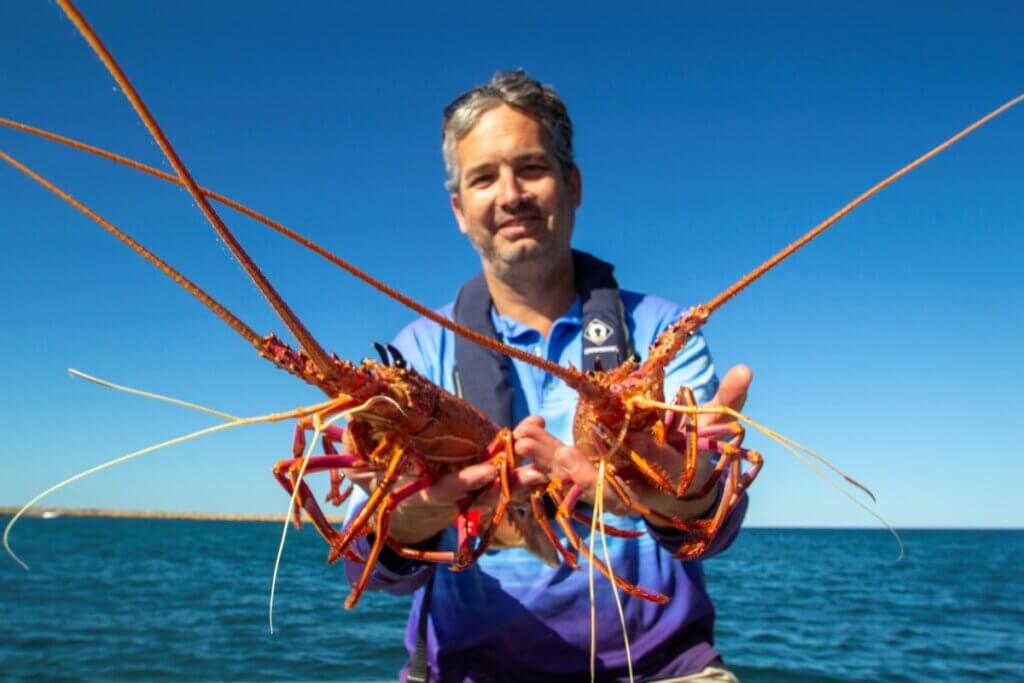
A firm fixture in the fishing calendar
Once crays start their march, it is an annual phenomenon that generates a lot of excitement among cray fishers, with the annual migration providing awesome fishing opportunities for potters and divers.
What makes the whites run even better, Recfishwest Operations Officer Aaron Moses said, is that the action taking place at many reefs is relatively close to shore.
“The whites run is a major part of WA’s fishing calendar,” he said.
“The nearshore crayfish abundance during the whites run is what underpins this awesome fishing experience which sends fishers, like myself, ‘cray-zy’.
“During the run, it’s a common sight to see mad-keen crayfishers queuing up at most boat ramps from 4am to get out and pull their pots or go for a quick dive before work.
“I’m one of those heading to the local boat ramp, and trust me, it’s actually easy to spring out of a bed to hit the water when you know the potential reward is a feed of crays.”
The inside track on the hot spots
The nearshore abundance during the annual whites run is the contributing factor to more than half of WA’s total recreational cray catch taking place from December to February.
The awesome western rock lobster fishing is a testament to great fisheries management.
During the run, many nearshore locations to the north and south of Perth produce great numbers of crayfish.
For Perth-based fishers who are potting for crays this summer, Dr de Lestang suggested Two Rocks, Mindarie and Garden Island will be strong performing metro locations.
